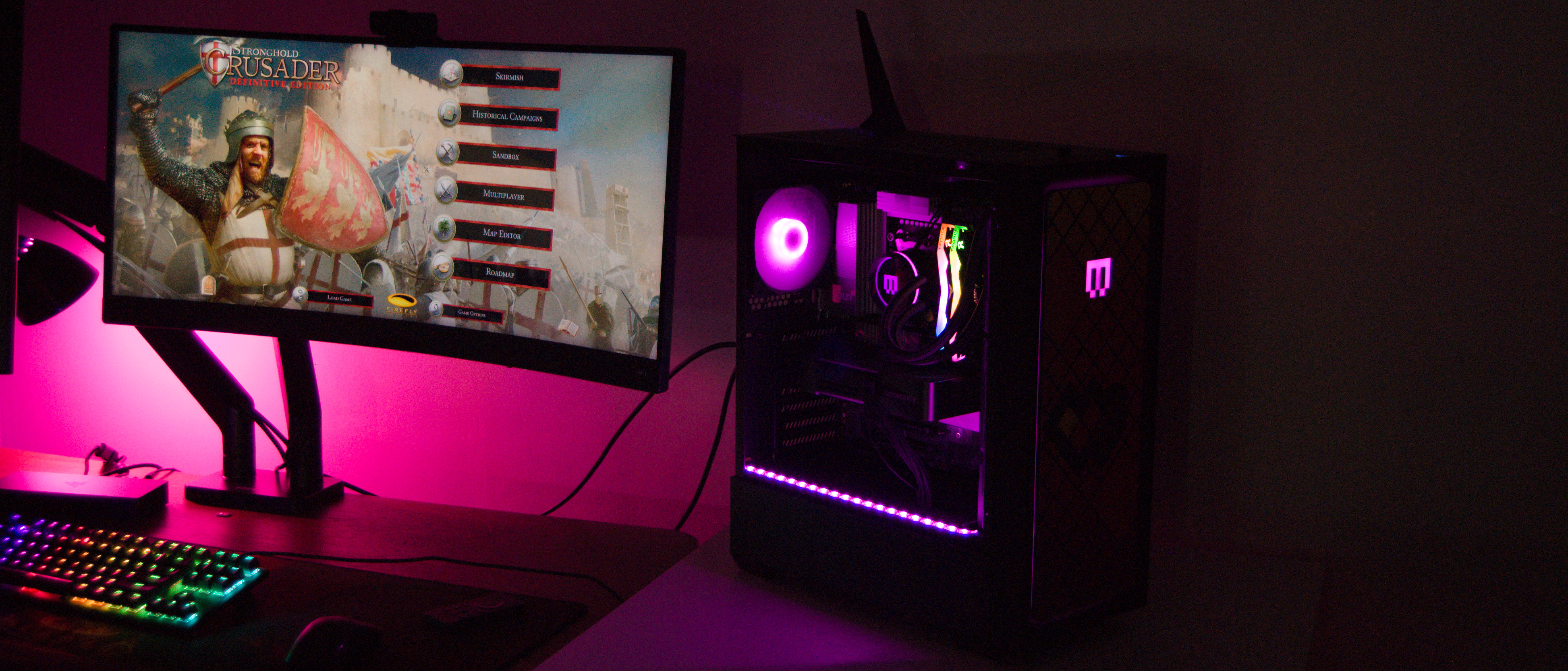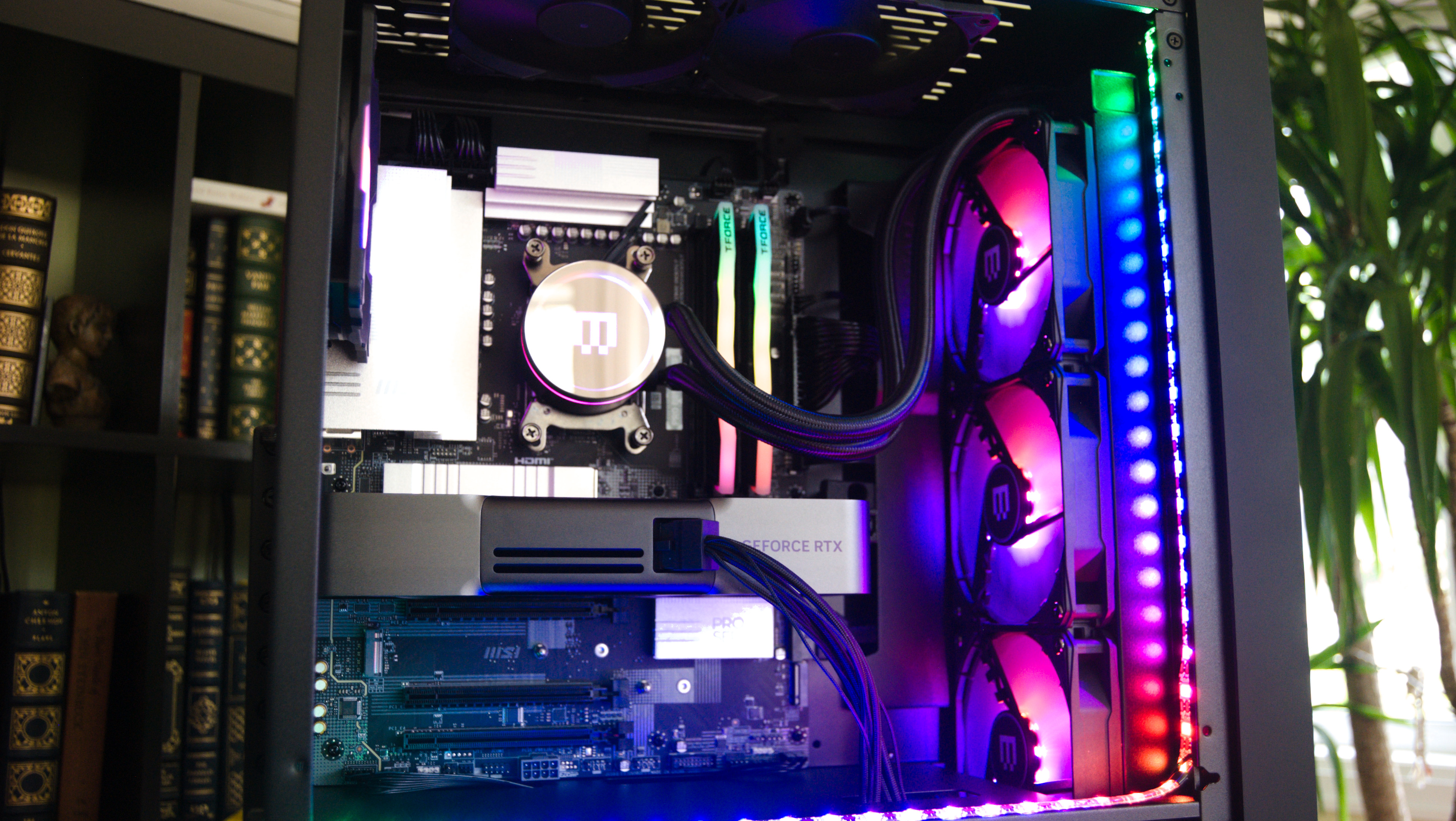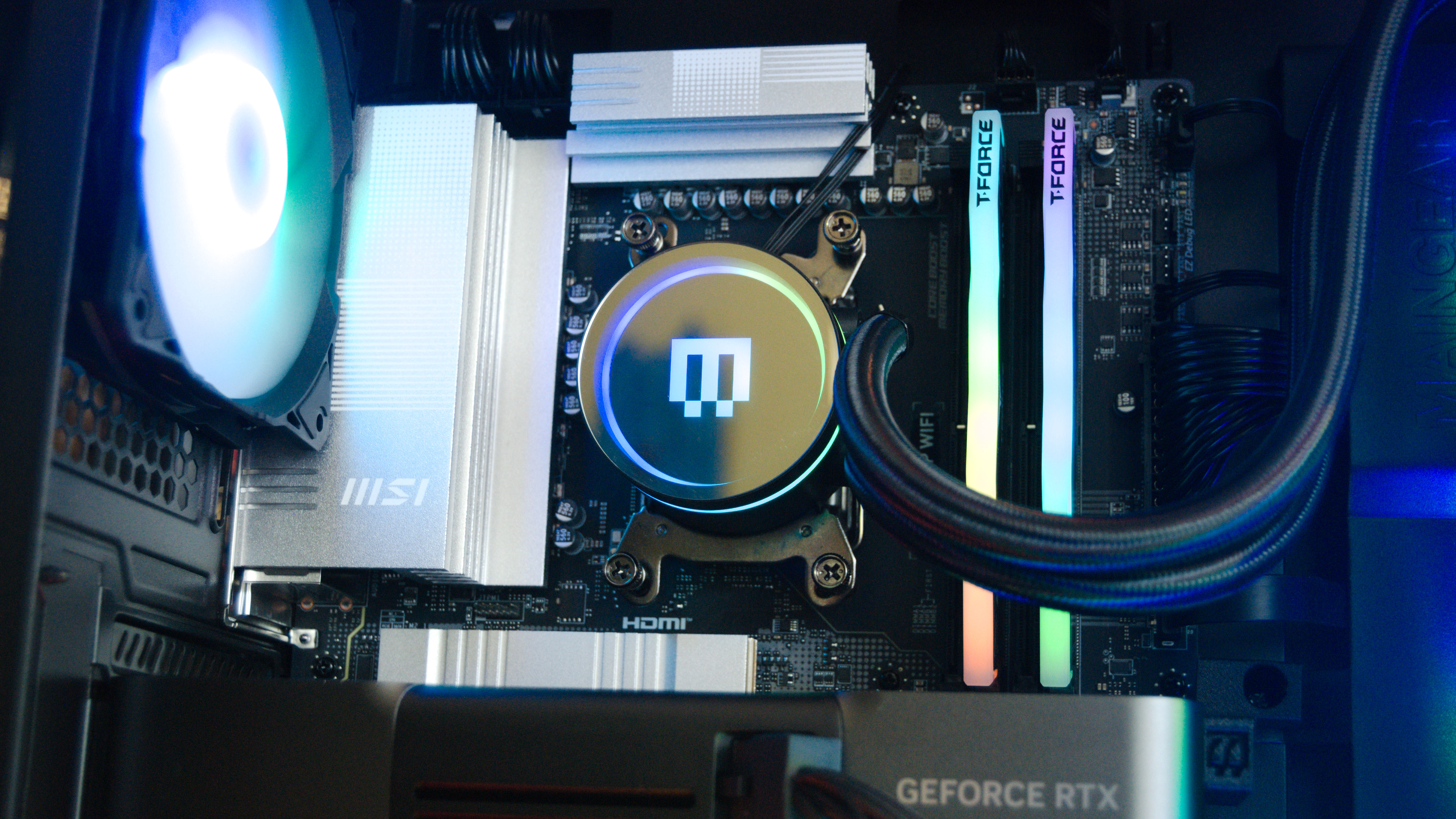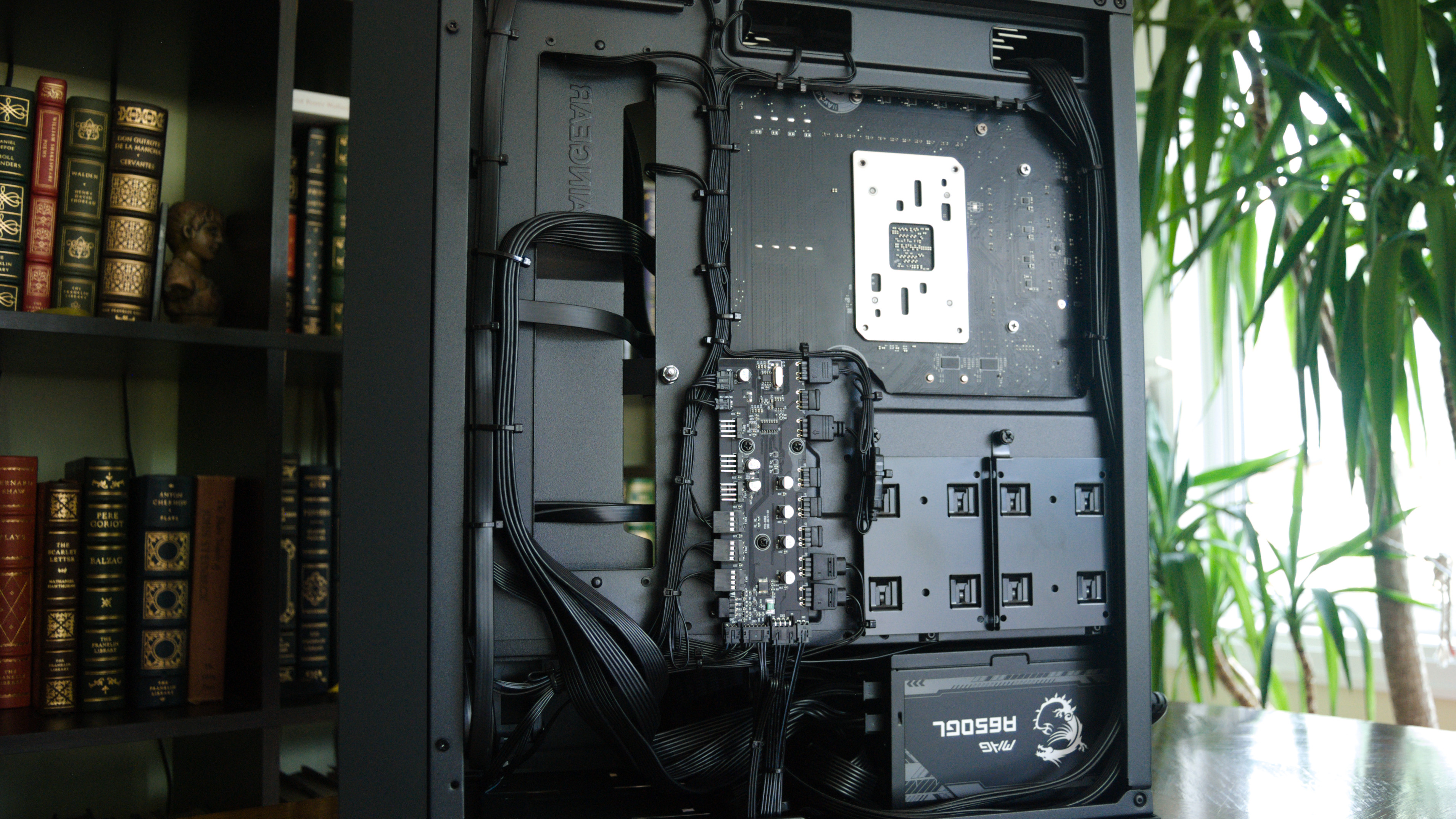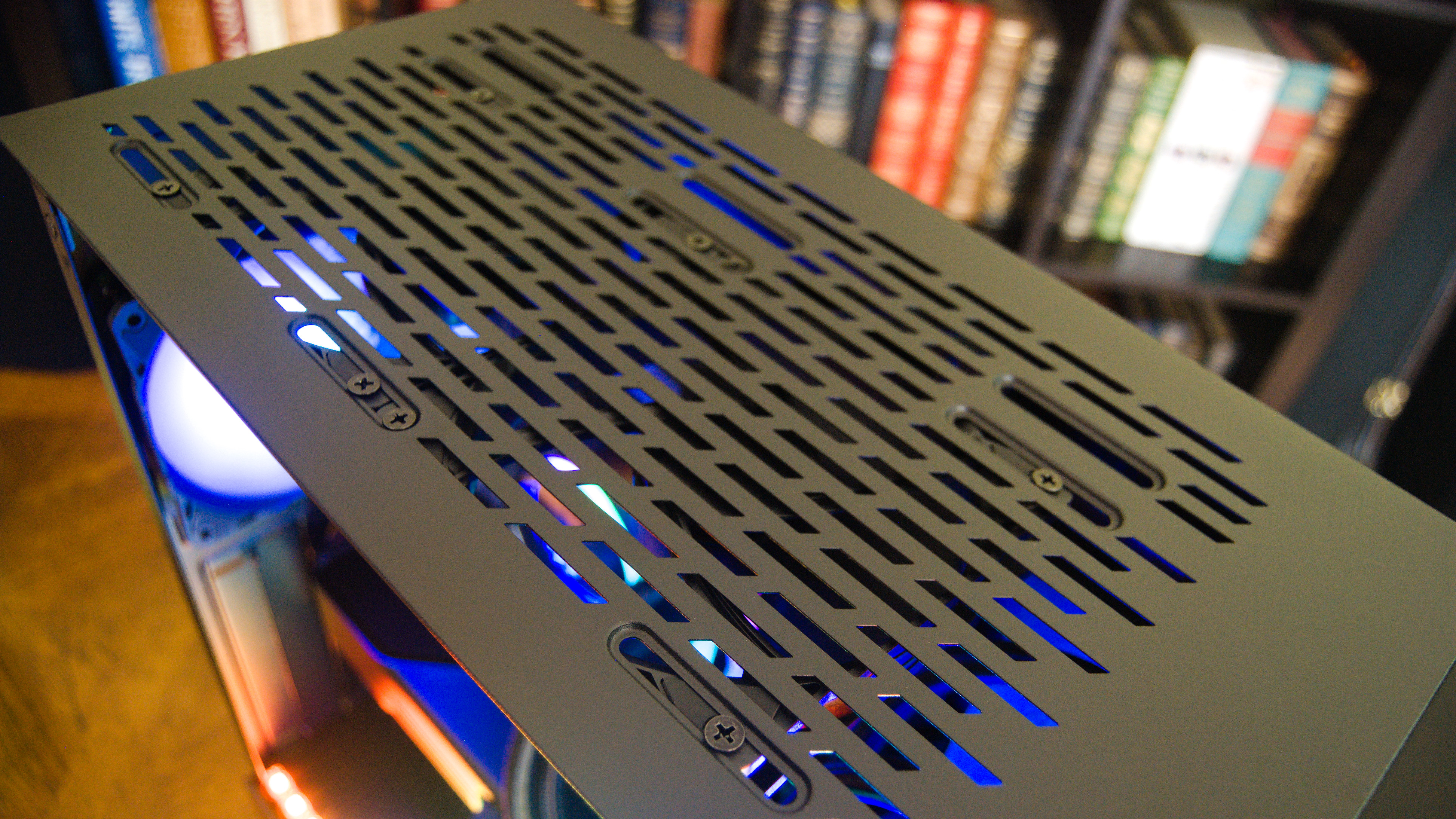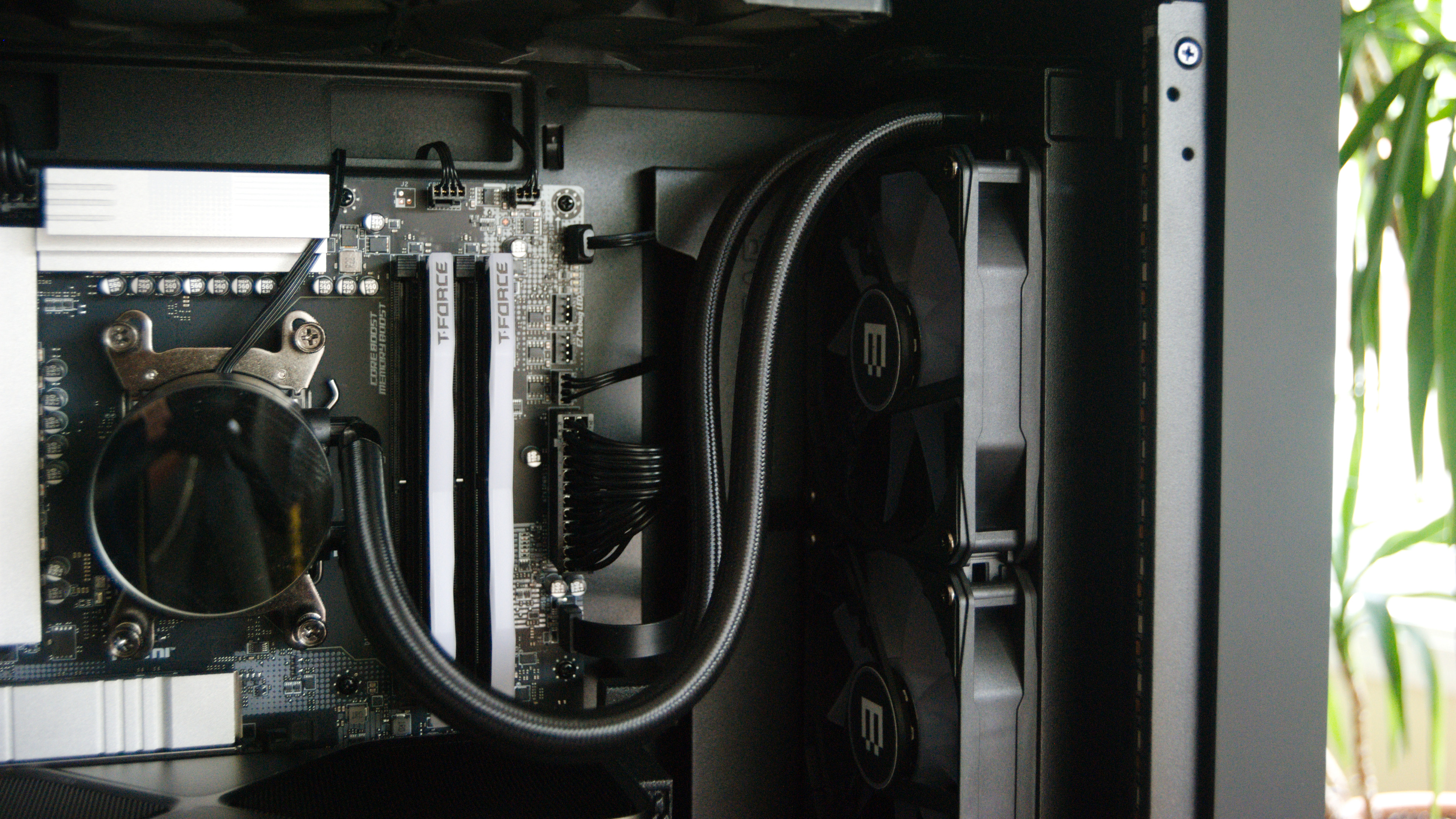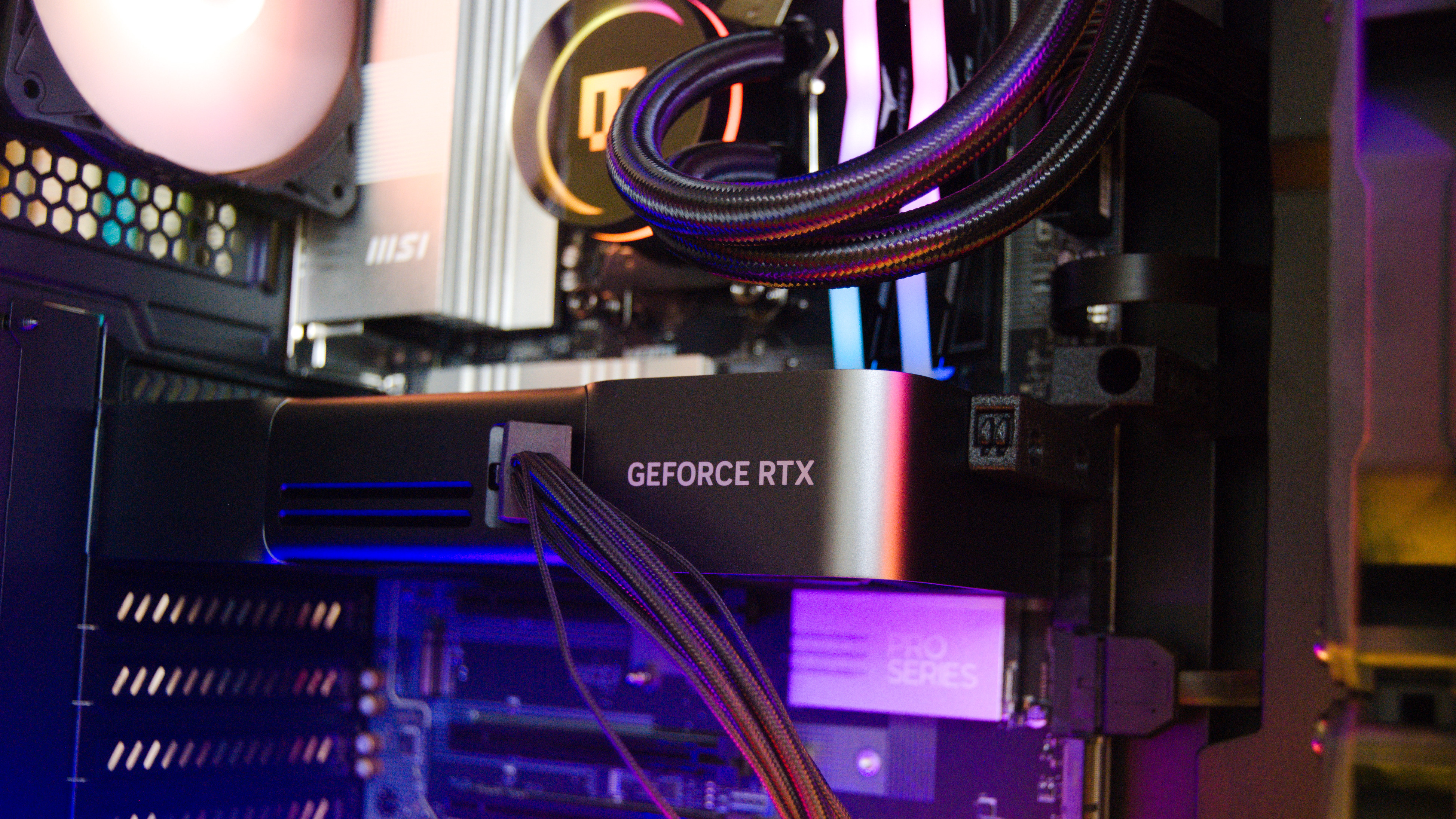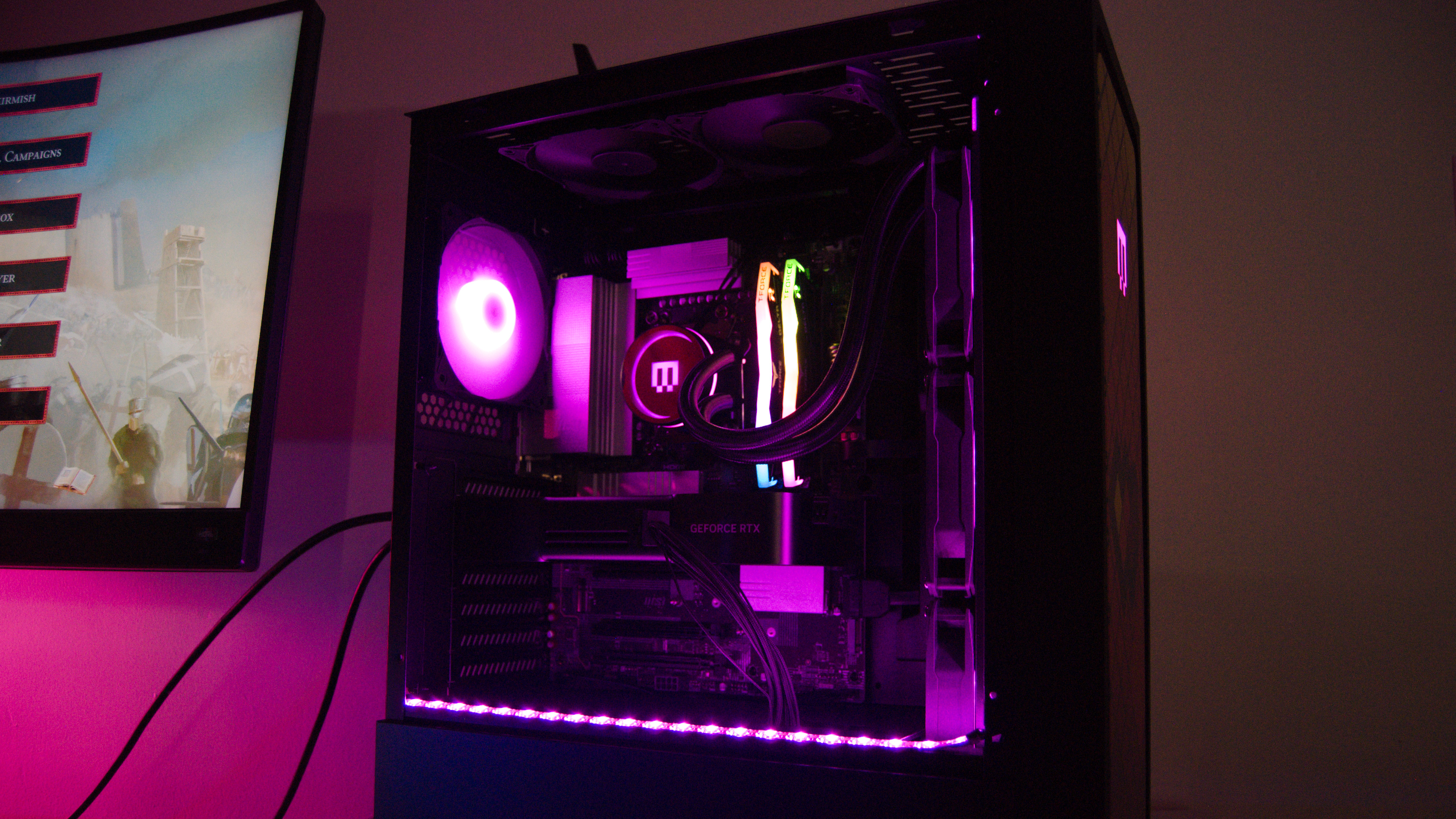Windows Central Verdict
Maingear's MG-1 is assembled with care, and the attention to detail is evident throughout. A few small nitpicks stand in the way of a perfect score, but that shouldn't stop you from seriously considering this gaming PC if you don't want to build your own.
Pros
- +
Close attention to detail and clean cable management
- +
No proprietary parts except for case and cooler; both are industry standard
- +
Extensive customization options as well as pre-builts ready to ship
- +
In-house customer service is convenient
- +
No surprises hidden behind any panels; just a solid PC
Cons
- -
Needs finer dust filters on some intakes
- -
AiO cooler isn't in an optimal position
- -
Side panels lack captive screws
- -
You're paying a premium compared to a DIY job
- -
Zip ties aren't as convenient as Velcro bands for cabling
Why you can trust Windows Central
Pre-built gaming PCs range greatly in price and quality. Unfortunately, a high price doesn't always mean you're getting something put together with attention to detail or the best parts on the market.
Maingear attempts to step away from other system integrators by offering incredibly detailed customization options, industry-standard components, strong customer support, and a build quality that feels like it was made by someone who actually cares about PCs and who has experience putting them together.
I've tested and reviewed several of Maingear's pre-built systems over the years, and each time I'm impressed with what the company has to offer.
The latest sent my way on loan is the new Maingear MG-1, updated for all of the new AMD, Intel, and NVIDIA hardware (including RTX 50-series GPUs) that's launched in recent months.
I'm focusing more on build quality, airflow, and pricing than anything else in this review, as I know you can check out reviews for individual hardware separately.
I've spent a week taking apart and putting Maingear's MG-1 back together, all the while enjoying some of my favorite games. Here's what you need to know.

I've been interested in PC building all my life, and I've put together countless gaming systems for myself and for friends over the years. Combine that experience with my 9+ years of covering PC hardware at Windows Central, and I know exactly what makes a pre-built PC worth your money.
Maingear's attention to detail and build quality are commendable
When buying a pre-built PC, I recommend that most people find something as close to a DIY build as possible. I know that not everyone has the time or yearning to build their own.
All the latest news, reviews, and guides for Windows and Xbox diehards.
👉 Related: My top 7 rules that every PC build beginner should follow — saving time (and money)
But a PC that uses standard parts and is built into a regular case with a motherboard that anyone can buy off a shelf helps avoid difficulties when tinkering or upgrading.
• CPU: AMD Ryzen 7 7800X3D
• GPU: NVIDIA GeForce RTX 5070 (Founders Edition)
• Memory: 16GB DDR5-6400MT/s (2x8GB) T-Force Delta RGB
• Storage: 1TB T-Force A440 M.2 PCIe 4.0 NVMe SSD
• Motherboard: MSI PRO B850-P WIFI
• OS: Windows 11
• Case: Maingear MG-1
• Wireless: Qualcomm Wi-Fi 7, Bluetooth 5.3
• CPU cooling: Maingear Epic 360mm RGB (AiO)
• Case cooling: 3 fans
• PSU: 650W MSI MAG A650GL XX
• Warranty: Up to 3 years
• Price: $2,266 as configured
The only proprietary hardware in this MG-1 build is the case and the 360mm AiO (all-in-one) cooler. The case is rather plain — heightened aesthetically with a custom WC front panel, a $99 upgrade — but the pump head has an RGB ring and a nice holographic Maingear logo.
There's no wacky motherboard design that doesn't allow for replacement, no generic PSU that frightens when viewed, no OEM GPUs that may or may not hit the performance you expect, and, ultimately, no surprises.
The PC ships with ample padding of the expanding foam variety, and it's shipped with the front of the PC up to prevent unnecessary strain on the GPU's PCIe slot. I also appreciate the hefty GPU arm that's bolted into the case's internal side panel.
This allows for quick set up — just remove the packaging, plug in power and video, and hit the button to boot.
I didn't have to reseat any components or move any cables around, although I do recommend buyers give their PC a quick once-over before the first boot. You never know what can happen in shipping.
Because Maingear doesn't add its own software or bloatware of any kind, you get a fresh Windows 11 install, just like you put this thing together yourself. A Maingear background is as far as I see customization going.
Altogether, this situation gives PC buyers the best of both worlds. You get a painless and quick setup, the PC is built as good or better than I could do myself, and there's no bloatware to fight with as soon as you boot.
No backstage spaghetti in sight
My loaner MG-1 review sample has a 120mm RGB exhaust fan case rear, two more 120mm fans along the top for exhaust, and three 120mm fans that make up the 360mm AiO cooler on the front.
In this setup, the AiO's three fans pull rather than push air through the radiator. This generally doesn't make more than a degree or two difference, if at all. However, with the air comes dust, and there's a lack of a fine filter on the outside.
This is more attention to detail than I generally put into my own builds.
The Ryzen 7 7800X3D CPU is meant to run hot without taking damage, and indeed the chip in the MG-1 idled at about 46 degrees C (114 degrees F), climbing to the 80-degree range with the system under full load in a stress test.
The 39 degrees C (102 degrees F) idle temperature reading on the motherboard sensor only climbed a couple of degrees in the same stress test. For reference, it's a balmy 24 degrees C (75 degrees F) ambient temp in my office. Ultimately, the case's fans keep the interior at a reasonable temperature.
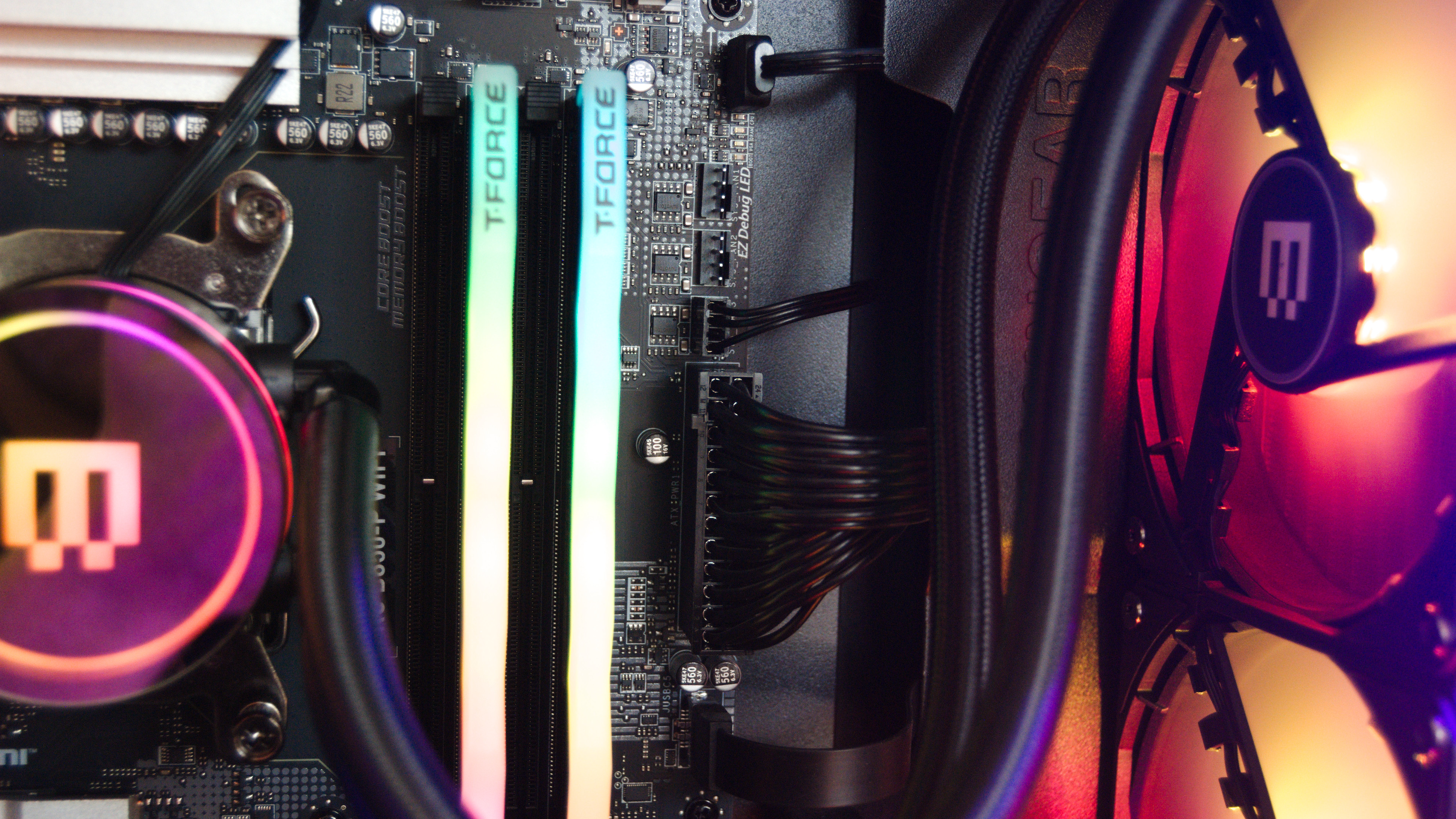
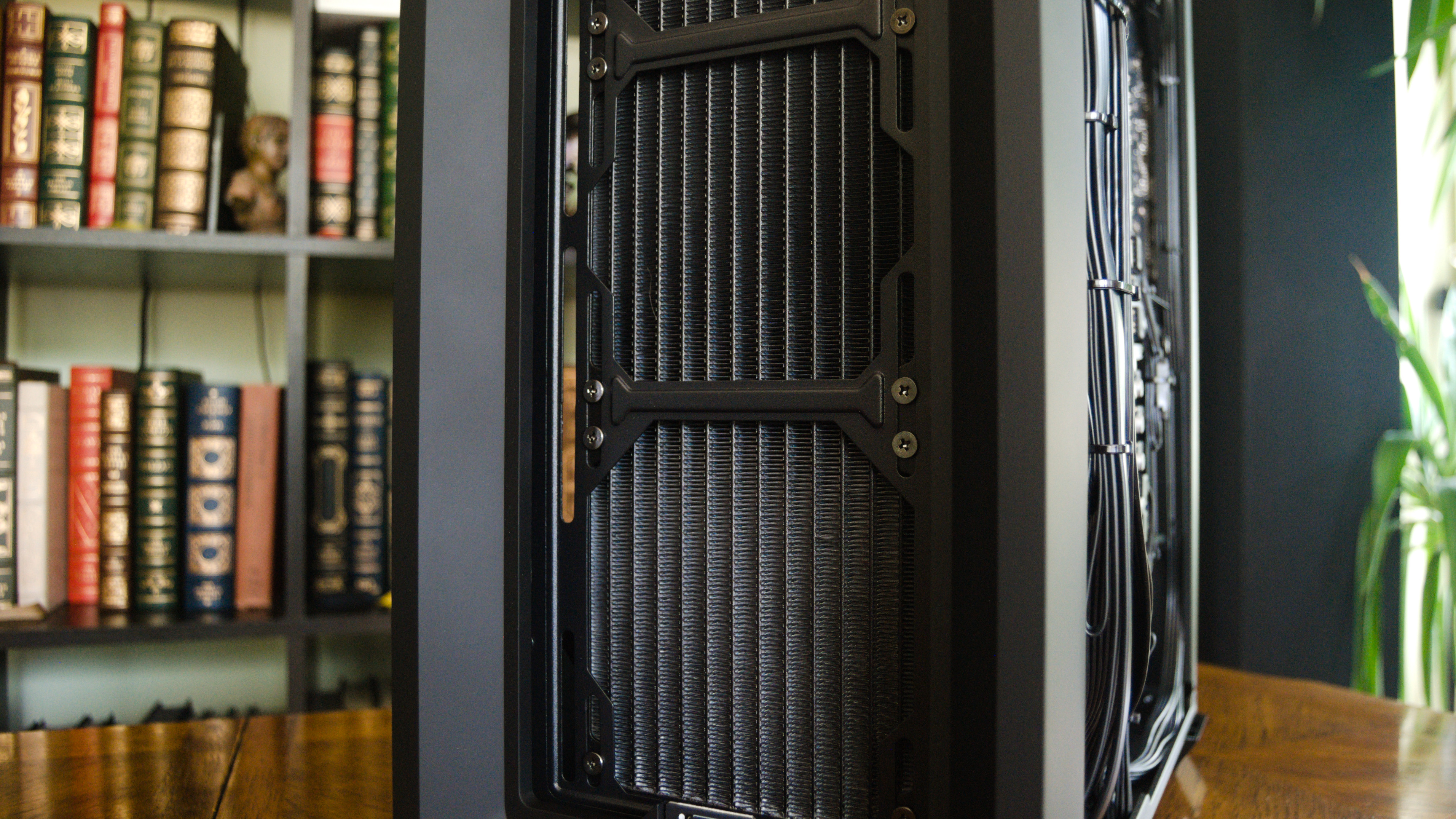
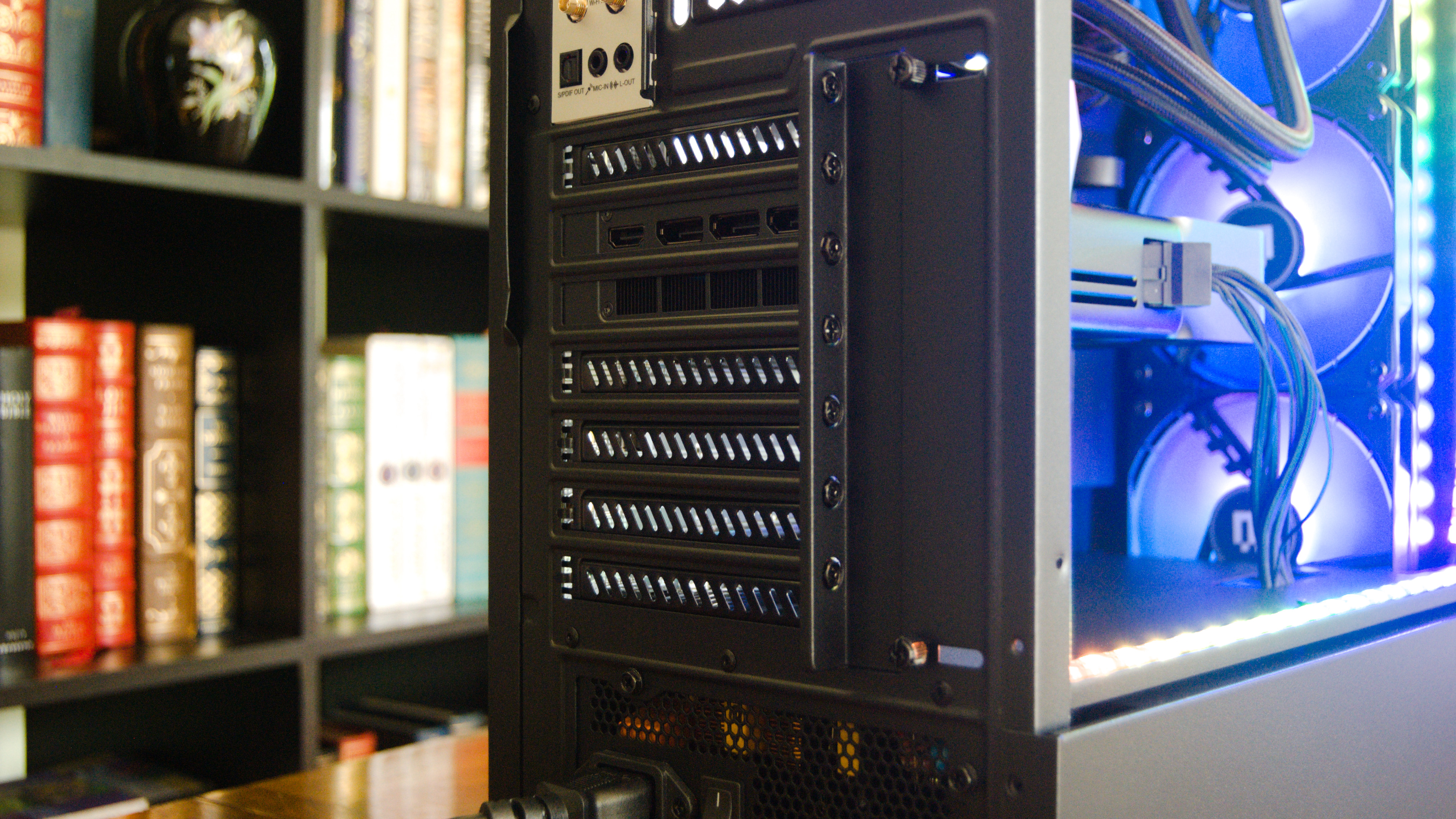
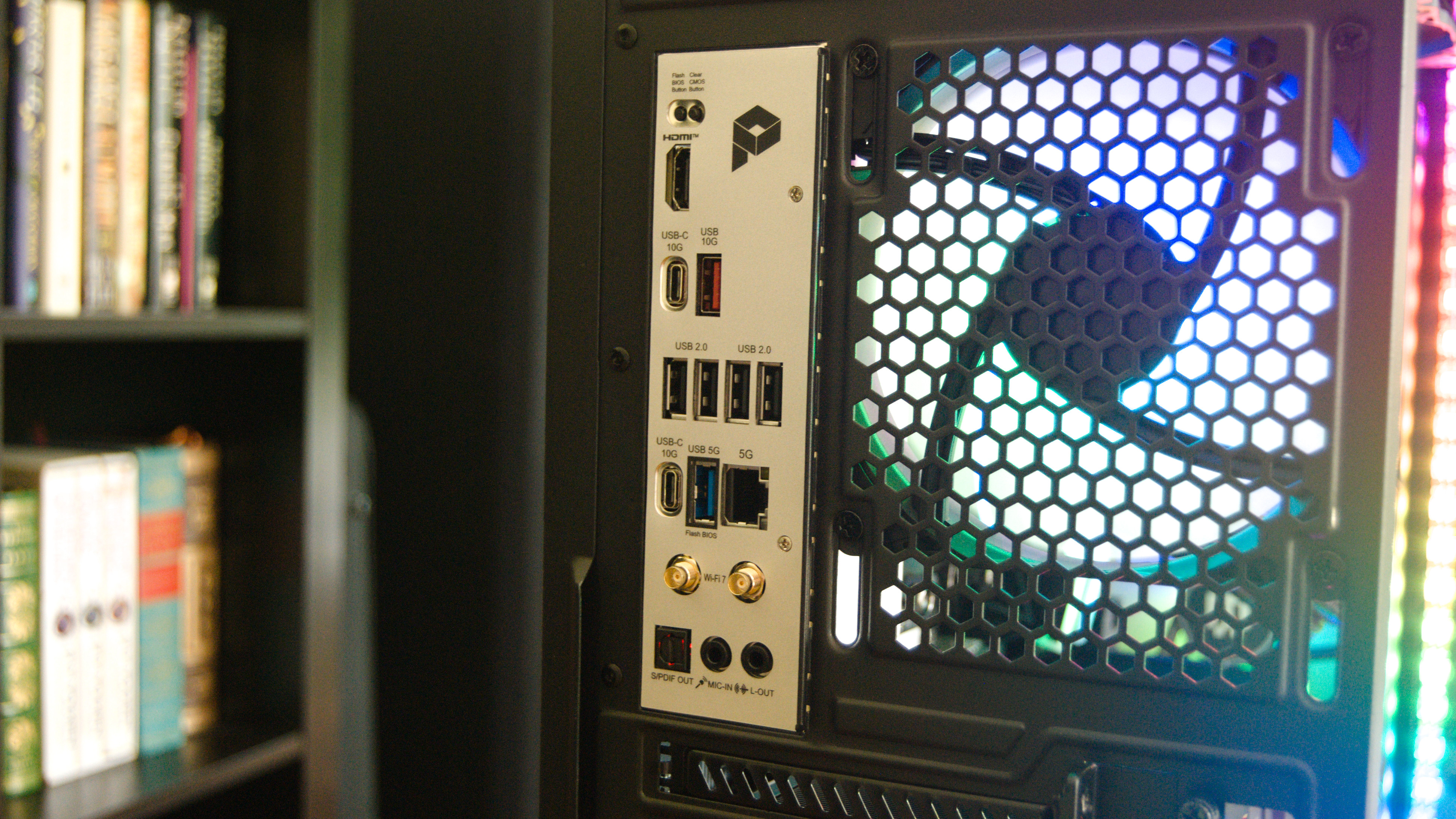
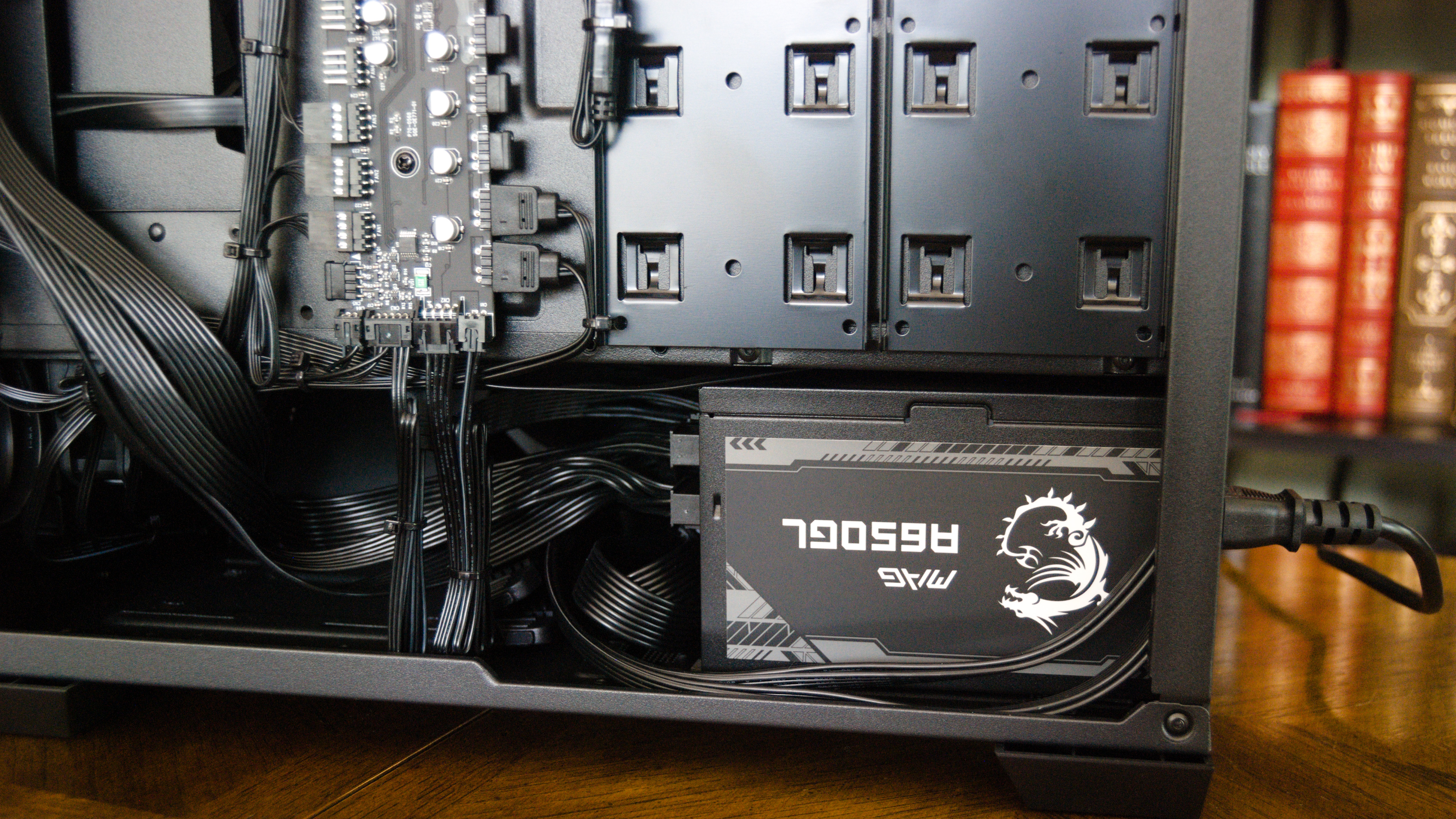
Removing the rear side panel reveals a neat cable layout that's secured with zip ties. Velcro ties would be better, as you'll have to snip ties to reroute in the future.
There's a bit of clutter near the PSU, but that's unavoidable to some extent. This is more attention to detail than I generally put into my own builds.
Cables connect to the motherboard discreetly, and there's no pulling apart a snarl to figure out which cable needs rerouting or replacing. Future upgrades should be no challenge here.
Maingear includes documentation, signed by individual employees, with checked boxes to ensure everything is working properly before the PC is loaded into a box. It makes things feel a bit more personal, but the real evidence is in the PC.
A few small nitpicks, but nothing serious
The last time I reviewed a Maingear MG-1, I noted a lack of dust filters on some of the venting.
That, unfortunately, hasn't changed for the 2025 model. While the PSU has a dust filter on the bottom of the PC — definitely the most important filter you can have — the top and front cutouts lack the same.
This can be remedied at home with some custom screens, but I'd much rather see Maingear include these relatively cheap add-ons at the factory.
The only other nitpick I have is the AiO cooler's placement. I've always gone by the rule that an AiO should be installed along the top of the PC case. If not, it should be installed at the front with the pipes coming out of the bottom.
This helps prevent air bubbles from getting in the way of regular operation, which can add noise and reduce efficiency.
That's not the case here; the AiO is installed at the front of the PC, but with the pipes coming out of the top. Because of how thick the AiO is, this is the only realistic way it'll fit inside the case.
The good news is that I haven't noticed any extra noise from the CPU cooler. Stress testing the system under full load with the side tempered glass panel in place, I got back a maximum of 56.1 decibels. That's about the same as a quiet conversation.
When idling, with the tempered glass panel installed as usual, that noise drops below audible in my home office.
This should not be a dealbreaker by any means, and most people won't notice any difference. It's just something that stands out to someone who has built a lot of PCs.
Last thing: the side panel screws aren't captive. Annoying.
Maingear's MG-1 is a smart choice for PC gaming veterans and noobs alike
I put together a similar build on PCPartPicker to the one here. It came out to $1,566 without a case or fans, and that's assuming you can find an RTX 5070 Founders Edition at its $549 MSRP. Not likely, but you can find third-party cards for the same $549.
Add another, say, $150 for a case and fans, and you arrive at about $1,716. That's a $550 difference, give or take $100, compared to the $2,266 MG-1 model configured for my review; it's a rough estimation.
That's a fairly steep premium, and whether you want to pay it is up to your wallet. Keep in mind that the warranty and in-house customer support will certainly be appreciated should anything go wrong.
Although I love building my own systems, having a PC built to such a high standard arrive all ready to go is a luxury that can't be understated.
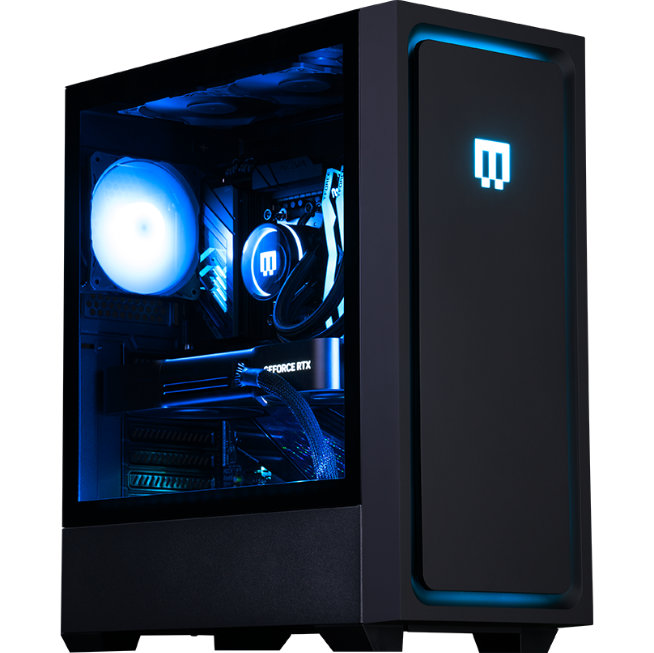
I value a clean build that uses standard parts and doesn't come with any surprises, and that's exactly what Maingear's MG-1 delivers. I have a few small nitpicks and you'll have to come to terms with paying a premium, but this is an impressive machine for both veterans and newcomers to PC gaming.

Cale Hunt brings to Windows Central more than nine years of experience writing about laptops, PCs, accessories, games, and beyond. If it runs Windows or in some way complements the hardware, there’s a good chance he knows about it, has written about it, or is already busy testing it.
You must confirm your public display name before commenting
Please logout and then login again, you will then be prompted to enter your display name.
